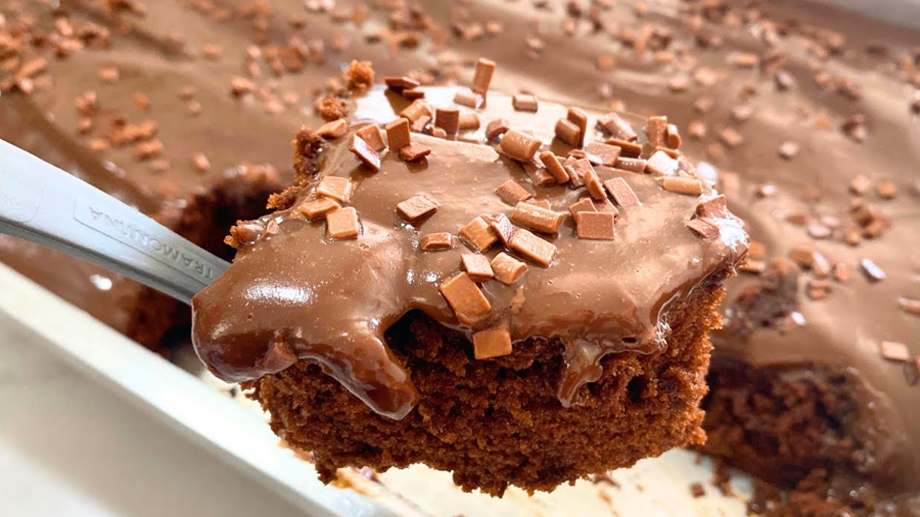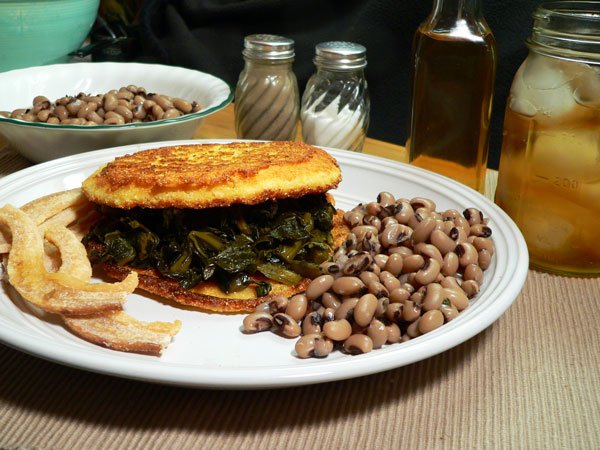
A step-by-step, photo illustrated recipe for making a yummy Collard Sandwich. Serve it up with some Fried Fatback and a side of Black Eyed Peas. It’s a great way to use up any leftover collards you might have. Wait…is it even possible to have leftover collards?

Collard Sandwich Recipe:
Originally published January 07, 2013
New Years has just passed us, it’s now officially 2013. While collards are available throughout the year, chances are you might have some leftover from your Official New Years Day Meal. This is a great way to use up those collard greens. It’s really very simple and it’s something that a few “very special” restaurants here in the South have on their menus during the winter months.
My niece served these up at her restaurant a few years back. She makes some pretty good collards…according to those that actually “LIKE” collards. As you may know, I’m not a fan of these healthy and good for you greens. I’ve just never been able to acquire a taste for them. I keep trying them on special occasions but, I still don’t find any that I can handle. Growing up, everyone in my family enjoyed collard greens…except for me. I figure if my own mama couldn’t cook them to where I liked them….no one else will ever be able to.
Still, I had to have at least a bite or two as part of my New Years Day Meal. And, collards were the first thing I cooked and posted a recipe on, when I started Taste of Southern on January 1st of 2012. I did it as a tribute to my mom and I think she would have been proud that I even tried. You can find my recipe for collards and for the entire New Years Day Meal, right here on our site.
I’ll show you below, how to make the “hoe cakes” that you’ll need as the bread for your Collard Sandwich. You’ll also need some cooked collards and a few pieces of fried fatback to go along with them. Looks like having collards as my first recipe each year….could become tradition. Ready to give them a try? Let’s Get Cooking!
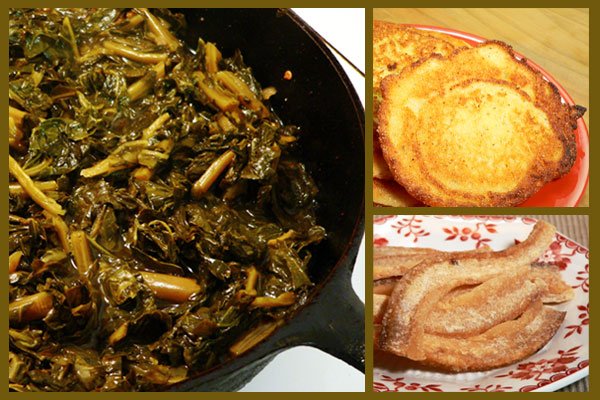
Collard Sandwich Recipe: You’ll need these ingredients.
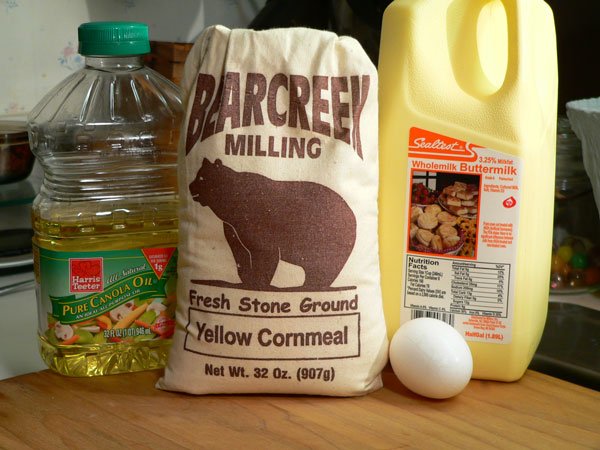
You’ll need these ingredients to make the cornbread hoe cake. It’s really easy. Hoe cakes are just simple pieces of fried cornbread.
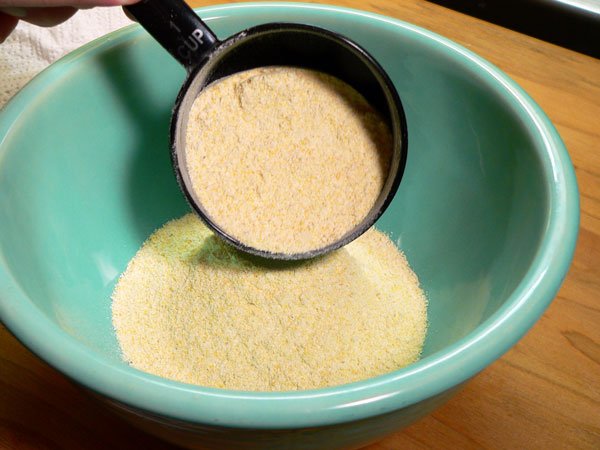
Add the cornmeal to a medium size mixing bowl.
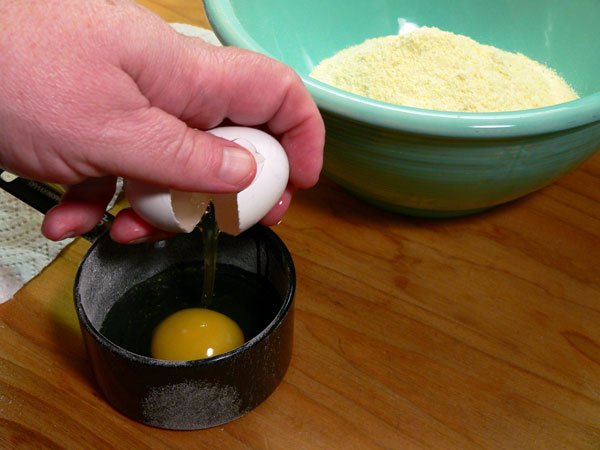
Crack one egg into a small dish, whisk it up with a fork.
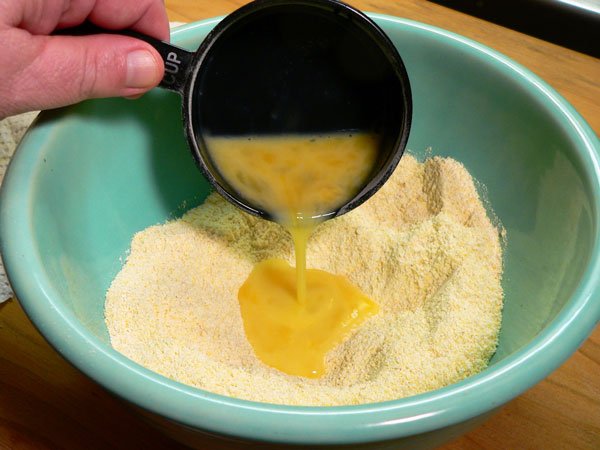
Make a small well in the cornmeal. Pour the egg in the cornmeal.
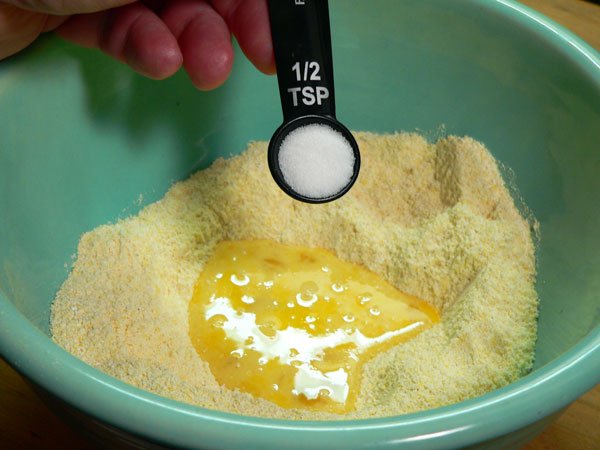
Add the salt.
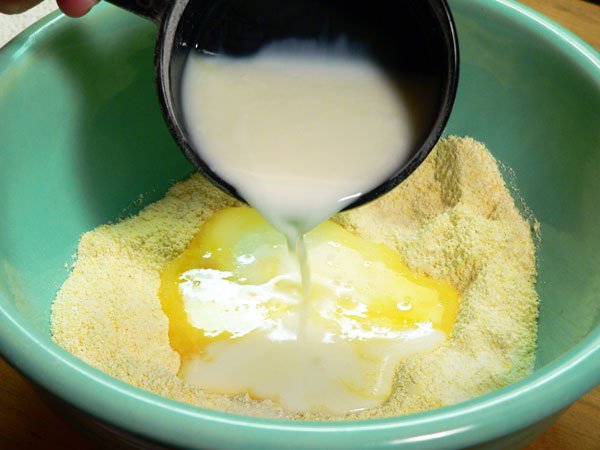
Add the buttermilk.
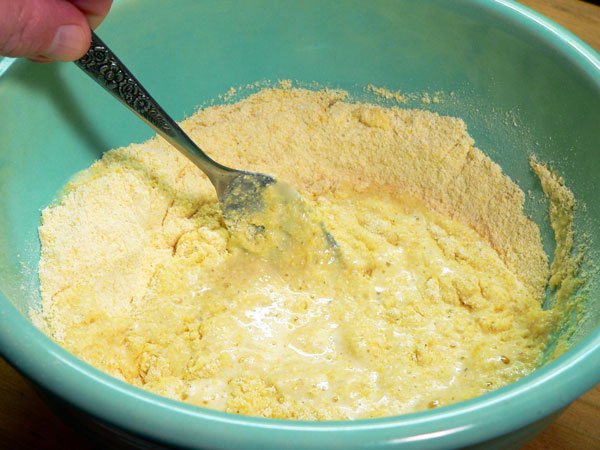
Grab a fork and stir the mixture, just enough to incorporate all the ingredients.

This…is just a bit too dry.

Slowly add just a little more buttermilk, if needed. Stir it a time or two as you go.
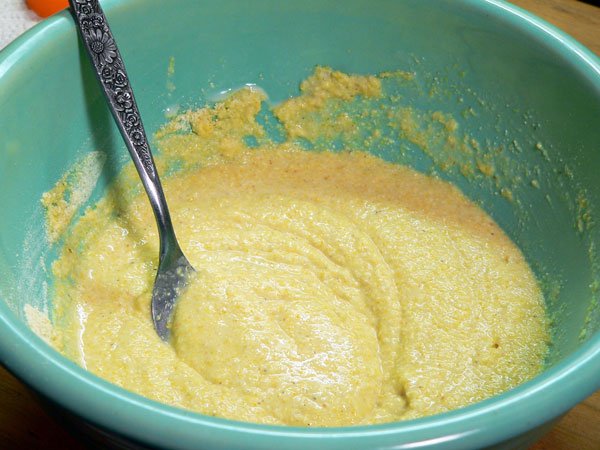
You’ll want your batter to look more like this. It’s a little wet but not overly wet. You want it to the right consistency so that you can pour it into the pan from a spoon or ladle. Don’t worry if you have a few lumps, they’ll work out as it cooks.
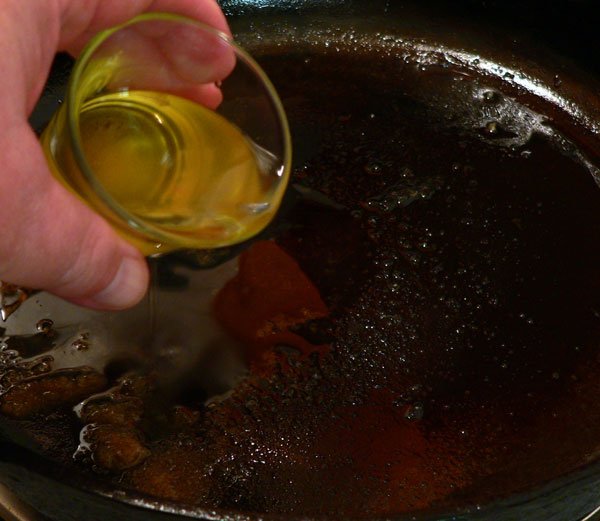
Add enough oil to your skillet to cover it about 1/4″ deep in the bottom. I just fried up the Fatback in this pan so it’s already warm…I just need a little more oil. You should have your skillet pretty much warmed up with your cooking oil by the time you’ve mixed your batter. The batter doesn’t need to sit out for long once it’s mixed, you need to cook it right away.
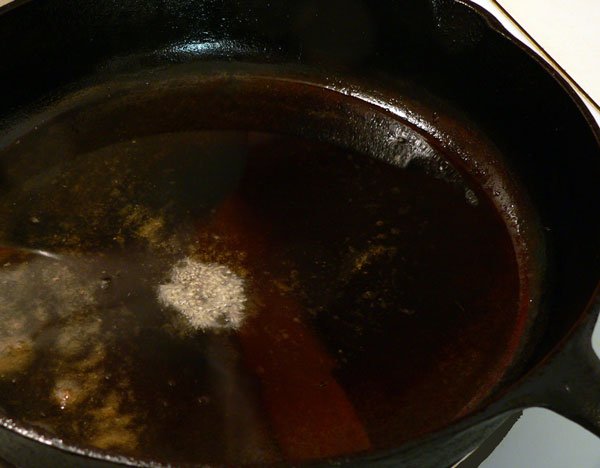
On my stove, medium heat will usually get the oil hot enough for frying when I’m using my cast iron skillet. Your stove may vary. You’ll want to heat up the pan and oil to a proper frying temperature. You don’t want it smoking and overly hot as it could erupt into flames and cause a fire if it’s too hot. Adjust the temperature as you go.
You can test your oil to see if it’s ready for frying in a couple of different ways. A drop of cool water placed in the pan should start to sizzle, pop and dance over the oil. It’s pretty much the same if you sprinkle a few grains of cornmeal into the pan. If the cornmeal sizzles and dances over the top of the oil, you should be ready to start frying up your hoe cakes.
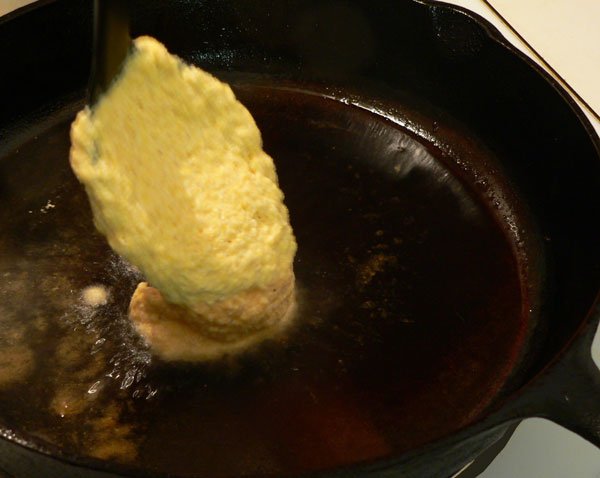
Use a large spoon and carefully drop some of the batter into the hot oil. The amount placed in the pan each time will determine the size of the hoe cakes that you make. You can probably get 3 or 4 smaller hoe cakes in the pan at the same time. I decided to make one large sandwich so I’m adding a big spoonful of batter to the pan.
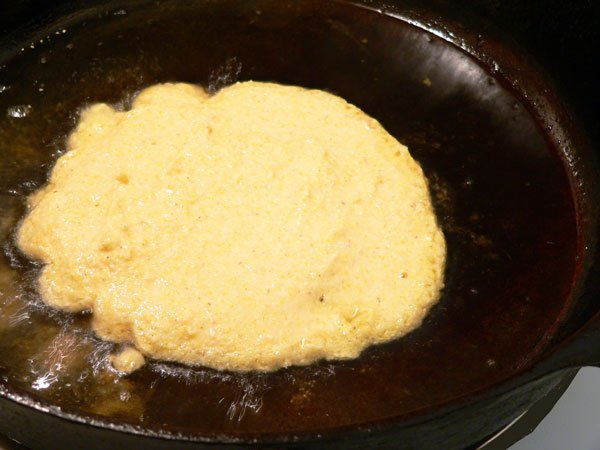
If the batter doesn’t spread out evenly, you can take the back of the spoon and gently spread it around. You want a thin hoe cake as opposed to a thicker one. That way, it has more “crunch appeal.” Thicker hoe cakes will have more of the cornmeal taste and could even be a bit doughy in texture if not fully cooked.
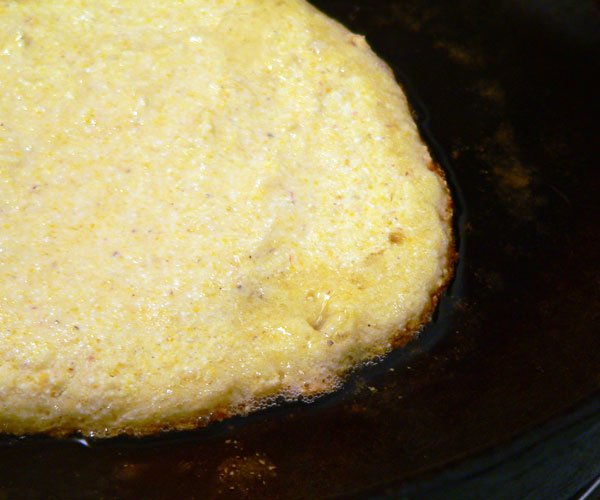
Ah…the mystery of frying cornbread. When is it done enough to flip it over? You’ll need to watch the edges of your cornbread to determine when it’s time to flip it. It’s pretty much like frying pancakes, you watch for the edges to start turning brown. You may also see some bubbles starting to form around the edges or, even in the middle, it just depends on the thickness of your bread. It will take a little practice if you’ve not fried hoe cakes before but, you’ll catch onto it really quick. You can do it.
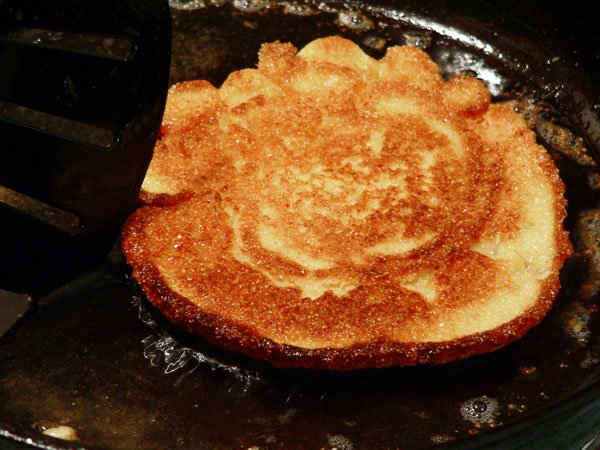
When the edges have browned, carefully flip the hoe cake over with your spatula. Just watch for splatters of hot cooking oil when you do it.
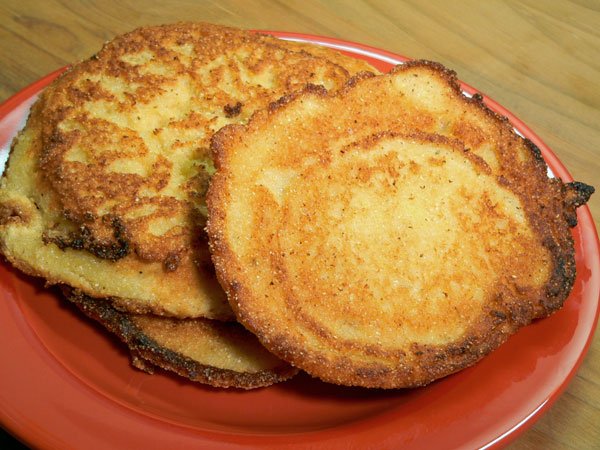
You’ll need two hoe cakes for every sandwich you intend to make.

Heat up the collards….we’re getting close….and…your kitchen will smell funny.
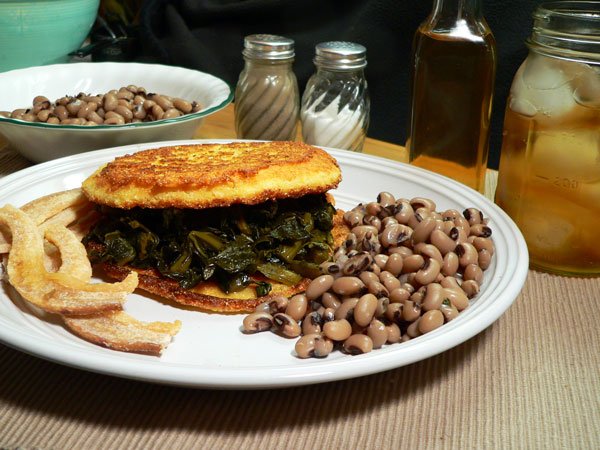
Place a big old spoonful of collards between two of the hoe cakes and you’re ready to dive in. Use a slotted spoon to dip the collards with. Drain off as much of the pot juice as you can so it doesn’t make the cornbread hoe cakes all soggy. You can cut the hard skin away from the fatback and place the meat (fat) on the sandwich itself or, just serve it alongside the sandwich. Hot peppers are often served on the sandwich as well but, I didn’t have any. I do suggest that you serve it up with some vinegar close by. Most people like to add a little vinegar to their collards.
So, there you have it. A real Collard Sandwich. Enjoy!


